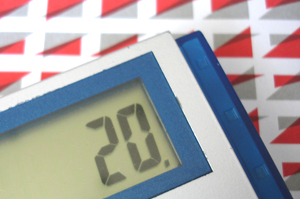Design Effectiveness

How designers value the apparent contradiction between creativity and accountability.
Design delivers 20% profit on the financial performance of a new product. That is the main conclusion of scientific research project ‘Effectiveness of Design’ presented by the Association of Dutch Designers (BNO) last Wednesday, June 30th.
It’s like falling in love, we all know that it exists, we can localize and describe it visually, but we keep looking for the how, what and why.
We seek to find a significant, causal relationship between investment and (financial) results because we want to exercise control on what is so important to us. Whether it leads to the man/woman of our dreams or to a better scorecard for our clients. In the words of BNO-Chairman Tom Dorresteijn: “Persuasion will not suffice anymore, we must prove that design is a business tool”.
The motivation for a scientific study of the effectiveness of design would appear to be dictated by current market pressure, but is also a logical step in defining our professional future. When looking at Marketing Communications, where accountability has long been commonplace, we have still a long way to go.
At the end of the presentation, the audience suggested a followup by means of an online quickscan for clients (individual scorecard), a practical pocket-almanac for designers and new courses in design education.
Creative freedom for the designer
Not everyone will be convinced of the value of this research. Apart from the businessmanager, accustomed to hard data (eg, website conversion rate), some creative people might have aversion against the rationalization of their profession. Is it the death blow to the role of intuition when design becomes a mathematical formula? What is the ‘value’ of self-expression, where is the space for authorship and social engagement?
The study highlights this issue indirectly. For it states, “the more freedom designers have to explore ideas beyond the project scope, the greater the positive impact of attention to experience design is for the quality of the experience of the product”. The extra cost involved (design hours) be justified by the increase in amenities in product development and offer more opportunities for innovative ideas in the future. In short, creative freedom for the Designer is also in the interest of the client, though hard evidence for a better financial performance is not yet found.
It seems that imagination loses the battle against realism, but the survey does provide designers with additional arguments to justify investment in design.
See also: Newsflash and Download BNO (Dutch)
The survey was initiated by the Association of Dutch Designers (BNO) and funded by the Pictoright Foundation and the Ministry of Economic Affairs. The execution was performed by the Erasmus University and the Technical University Delft. Four hundred managers of Dutch companies in the goods producing and service sectors participated in the study.
